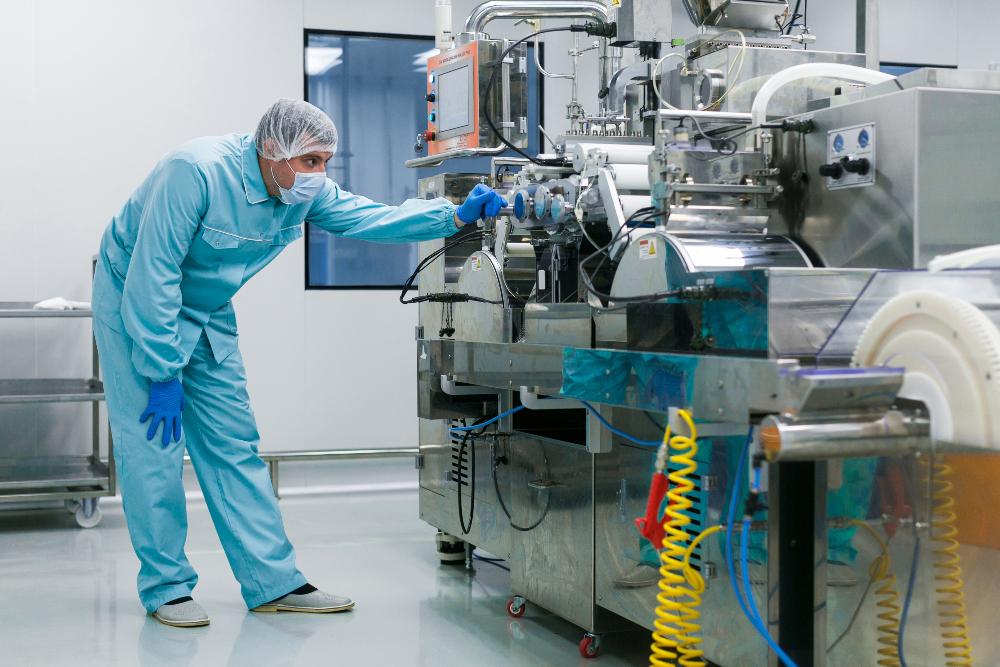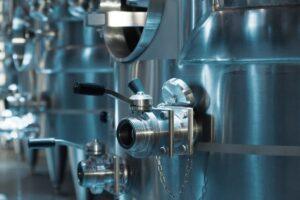
It has always been an innovative business, but over the last couple of years, the sector really has come into the modern world with regard to the production, processing, and consumption of food. From smart kitchens and automated production lines to personalized dining experiences, to the latest innovations in food delivery, technology is changing every corner of the industry.
Whether it is making food safer, faster, or more sustainable, these innovations are not just improving the way a food processing business operates – they are transforming the way consumers experience food. In this article, we will explore the exciting ways technology is pushing the boundaries of the food and beverage sector, bringing new possibilities for both companies in the food and beverage industry and consumers alike.
Food and Beverage Industry Automation
Industry automation in food production has changed the game, as robotics and AI-driven machines have fully changed the face of manufacturing. Automatic systems are smoothing the way for tasks that require human labor, like sorting, packaging, and even cooking. This not only quickens the pace of production but also ensures consistency and precision-critical for food safety and quality.
It helps reduce the demand for human labor, hence reducing operational costs while increasing output. Robotics can undertake repetitive tasks, leaving human workers to engage in more complex activities that require solving and creativity. Besides, with the development of AI systems, it is possible to predict when maintenance is required, reduce downtime, and optimize manufacturing food schedules that lead to higher efficiency.

Digitalization of Distribution and Logistics
Technology has been driving the food and beverage industry supply chain to become far more efficient, transparent, and responsive. Real-time tracking, AI, and machine learning – from a professional industrial equipment supplier – enhance every stage of the supply chain from farm to table, meaning fresher products, less waste, and speedier delivery.
Real-time Tracking and Delivery Optimisation
IoT devices and GPS systems track food items in real time through every stage of their supply chain. A business will be able to track a shipment in real time over its route and thus ensure delivery at the right time to avoid spoilage or any other form of delay. Such technology enhances transparency, both for businesses and consumers, on the origin of their food and its method of transportation.
Besides, the delivery optimization food processing technology uses algorithms in route planning to reduce the time taken in transportation and, consequently, the cost. Such tools take into consideration variables like traffic flow, weather conditions, and delivery schedules so that food reaches its destination fresh and at a good speed. This is quite important for perishable goods, whereby small delays mean huge losses.
AI for Demand Prediction and Reduction of Food Waste
Artificial Intelligence and machine learning now play a very important role in predicting consumer demand with greater accuracy. Analyzing historical sales data, market trends, and seasonal factors, AI-powered systems can forecast demand and thus guide a business on how much inventory it needs to stock. This reduces the risk of overproduction and prevents excess food from going to waste.
AI can also identify potential supply chain inefficiencies, such as bottlenecks or waste points, and provide a solution. For example, machine learning algorithms will figure out the best production schedule that best fits demand, making better use of resources and reducing food waste.
A More Sustainable Supply Chain
These advances in supply chain technology, while improving efficiency and cost-effectiveness, have the added benefit of enhancing sustainability. By reducing waste, streamlining deliveries, and ultimately having products fresher when they reach consumers, tech-driven solutions support the food industry in minimizing its environmental footprint while trying to meet the demands of a global market.
Food and Beverage Industry Trends
The food and beverage industry is dynamic and constantly changing. It has become driven by a combination of consumer preference, technological advancements, and a growing concern for sustainability. From automation to healthy innovation, here are trends that have revolutionized food production, marketing, and consumption.
Sustainability in the Lead
Sustainability ceases to be just a buzzword; rather, it is an issue that needs to be confronted head-on by the food industries in the present world. Enterprises embrace “green” operations in the reduction of packaging waste, local sourcing of ingredients, and renewable sources of energy in a food manufacturing plant. Also, vertical farming and scientific irrigation, among other ways of sustainable agriculture, appear to ensure less use of water and cause minimum harm to the environment. Increasingly, consumers want green products, making manufacturers more responsible for disclosure and environmental accountability.
Automation in Food Production
Food production and beverage processing are now being renovated with advanced robotics and AI-driven technologies. These systems promote efficiency, reduce labor costs, and enhance consistency in manufacturing. From robotic arms handling packaging to AI systems handling quality control, automation has been streamlined to help businesses scale up their operations faster. This helps in minimizing human error, hence safety and quality standards are always higher in the final product.
The Rise of Health-Conscious Products
In that respect, consumer demand has grown in consciousness, and the landscape of products is shifting. A growing interest in organic, plant-based, and minimally processed foods to answer the call for very specific diets, such as gluten-free, keto, or vegan lifestyles. The second fastest growing are functional foods, which are described as those enriched with active ingredients like probiotics, vitamins, or antioxidants, and reflect consumer interest in products that contribute an added health benefit. These changes reflect a larger lifestyle priority on health and wellness for consumers.

Technology-Driven Consumer Experiences
There is now more technology to drive how consumers will interact with a food brand. With so many personalized apps and online platforms that could help customers in meal planning, tracking, or other services, QR codes on the labels provide detailed information about sourcing or food processing and preservation. AR/VR experiences would also come on board to allow consumers to further explore your brand story, or to take an in-depth tour of a brewery or production facility.
Novel Alternative Proteins
A surge in demand for healthy and morally correct food has enforced innovation within the alternative proteins category. Plant-based meat substitutes, cultured meat, and insect proteins are gaining acceptance as alternatives to traditional meats. This provides a more environmentally friendly solution to the conventional meat product cycle. These innovations contribute towards shrinking the ecological impact caused by animal husbandry while meeting a growing market for people sensitive to animal cruelty and other sustainable causes.
Rise of DTC Models
E-commerce has disrupted the traditional way in which food and beverage brands reach the consumer. The DTC model cuts out middlemen from retail channels with personalized subscription services and home delivery options. The pandemic accelerated this trend, and convenience and buying options online are increasingly important to people.
Solutions for Food and Beverage Industry Equipment
In the food and beverage industry, food and beverage equipment performance is one of the most important elements in maintaining efficiency, product quality, and safety standards. From processing and packaging to storage and distribution, high-performing equipment ensures that production lines run smoothly, minimizing downtime and maximizing output. Beyond operational efficiency, industrial process equipment performance also has significant implications for environmental sustainability, material selection, and hygiene.
Operational Efficiency and Consistency
High-performing industrial process equipment will be able to keep up with production demand without compromising the quality of the products being produced. Advanced machines are fitted with automated monitoring systems and precision controls that minimize human error, increasing the likelihood of producing products with accurate dimensions. Dependable machinery eliminates sudden breakdowns that would upset the flow of production and subsequently delay the delivery schedule.
Environmental Concerns and Sustainability
While sustainable considerations are gaining importance in the food and beverage industry, equipment is getting scrutinized for its impact on the environment. Manufacturers will consider energy-saving machines that help lower power consumption and reduce carbon emissions. Equipment designed with minimal waste generation in mind – either through raw materials or packaging wastes during production – is also favored because of its consideration for ecological balance.
Example:
- Energy-efficient technologies reduce running costs and minimize the environmental impact.
- Water-saving cleaning systems save this resource while keeping hygiene level requirements.
Material Selection for Durability and Safety
The materials used in food processing equipment have to be of a high caliber that is strong, safe, and durable. For instance, stainless steel is highly preferred because it does not corrode, is easy to clean, and non-reactive with food products. Good-quality materials extend the life of the equipment while ensuring that it can handle the demands of processing various ingredients, from acidic liquids to abrasive powders.
Material selection also has implications for the safety of the finished product. Equipment made from food-grade materials ensures that no harmful substances leach into the food, maintaining compliance with regulatory standards and protecting consumer health.
Hygiene and Cleaning Requirements
For food processing companies and suppliers, like AMED-US, hygiene is non-negotiable. Equipment must be designed to facilitate easy cleaning and sanitation to prevent contamination and ensure compliance with food safety regulations. Features such as smooth surfaces, minimal crevices, and CIP (clean-in-place) systems make it easier to maintain a sterile environment.
Regular cleaning not only maintains safety standards but also extends the life of the equipment by preventing residue buildup and corrosion. Equipment that is easy to clean reduces downtime between production cycles, ensuring continuous operation and higher productivity.










